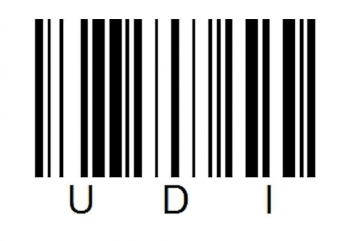MDR, IVDR and UNIQUE DEVICE IDENTIFIER (UDI)
According to the new EU Medical Devices Regulation (MDR – Regulation (EU) 2017/745) and the In Vitro Diagnostic Medical Devices Regulation (IVDR – Regulation (EU) 2017/746), the “Unique Device Identifier” (UDI) means a “series of numeric or alphanumeric characters that is created through internationally accepted device identification and coding standards and that allows unambiguous identification of specific devices on the market”.
The main goal of the UDI is to allow the identification and improve the traceability of devices. The UDI will also allow a better monitoring by the competent authorities as well as it represents a fighting mechanism against counterfeit medical devices.
The UDI will be mandatory for all medical devices and in vitro medical devices, except for the custom-made and performance study/investigational devices.
The UDI system is described in the Part C of Annex VI of both Regulations and consists of several parts:Production of an UDI:
- UDI device identifier (‘UDI-DI’), which is specific to a manufacturer and a device;
- UDI production identifier (‘UDI-PI’), which identifies the unit device production and the package devices (if applicable).
- Placing the UDI on the label of the device or its packaging (specific requirements);
- Storage of the UDI by economic operators, health institutions and health care professionals;
- Establishment of an electronic system for Unique Device Identification (‘UDI database’).
The basic UDI-DI will be the access key for device-related information and therefore is referenced in relevant documentation (e.g., certificates, declaration of conformity, technical documentation). The basic UDI-DI has the objective of identifying (in a unique manner) and connect devices with the same intended purpose.
The label and all higher levels of packaging (not shipping containers) of medical devices must include the UDI information, including the UDI-DI and UDI-PI. In case of reusable devices, the UDI carrier shall be placed on the device itself (direct marking). The UDI-DI of the device should appear on the EU declaration of conformity.
An UDI shall be attributed to a medical device created before placing such device on the market. The manufacturer should ensure that all information required is correctly submitted to the UDI database (European Database on Medical Devices – EUDAMED). Moreover, the manufacture needs to keep up-to-date a list of all UDIs that is has assigned.
The UDI database, integrated with EUDAMED, should be set up and managed by the European Commission, in order to validate, collate, process and make available the information to the public (free of charge, with maximum accessibility).
UDI OBLIGATIONS TIMELINE
The UDI assignment will be mandatory from 26th May 2021 for medical devices and from 26th May 2022 for in vitro diagnostic medical devices. When it comes to the submission of UDI data at EUDAMED database, it will be obligatory for medical devices from 26th November 2022 and from 26th November 2023 for in vitro diagnostic medical devices. Manufacturers may voluntarily comply with registration of their medical devices and in vitro medical devices from 26th May 2021 and 26th May 2022, respectively.
When it comes to the obligation of placing the UDI carrier, the timeline will be in accordance with the type of medical device (risk-based). UDI-carriers must be placed on the labels of class III devices by 26 May 2021 as long as for class I devices the timeline is 26 May 2025.
In sum, the manufacturer has the responsibility of assigning and register the UDI (and basic UDI-DI) and placing that information on the label and/or packaging. If a distributor, importer or other natural or legal person assumes the obligations incumbent on manufacturers, it also assumes all relevant responsibilities related to UDI (including labelling).
The UDI system can be complex and medical devices manufacturers must ensure compliance with the MDR and IVDR. Our team is here to assist your company throughout the entire process, turning it simpler and easier to make your medical device available on the EU market.
References:
- Regulation (EU) 2017/745 of the European Parliament and of the Council of 5 April 2017 on medical devices. Available at: https://eur-lex.europa.eu/legal-content/EN/TXT/PDF/?uri=CELEX:02017R0745-20200424&from=EN
- Regulation (EU) 2017/746 of the European Parliament and of the Council of 5 April 2017 on in vitro diagnostic medical devices. Available at: https://eur-lex.europa.eu/legal-content/EN/TXT/PDF/?uri=CELEX:02017R0746-20170505&from=EN
- MDCG 2019-4 . Timelines for registration of device data elements in EUDAMED. Available at: https://ec.europa.eu/docsroom/documents/34921















